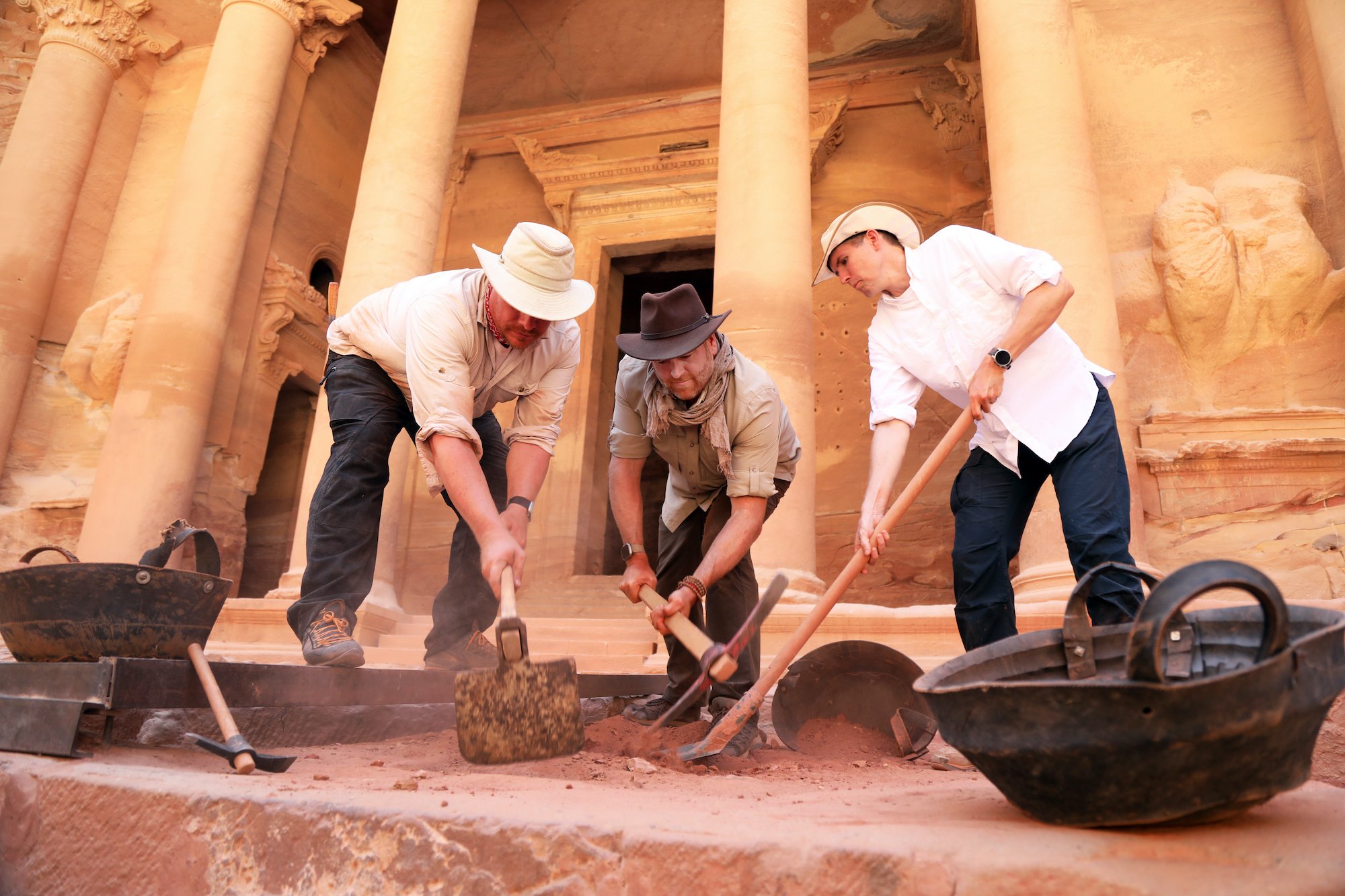
Petra, the world-famous ancient settlement carved into the sandstone slabs of Jordan’s Ma’an Governorate, is thought to have been constructed by the Nabateans between the 7th and 4th century B.C.E. Its classical architecture, the product of a civilization whose trade networks stretched from the waters of the Mediterranean to the shores of the Red Sea, has been the focus of innumerable excavations since its “discovery” by Swiss traveler Johann Ludwig Burckhardt in 1812.
As is the case with other top-destination archaeological sites like Stonehenge or Machi Picchu, virtually all of these excavations have received extensive media attention.
Explorer Josh Gates and Professor Pearce Paul Creasman, joined by Dr. Fares Braizat, Chief Commissioner of the Petra Development and Tourism Region Authority and Professor Fadi Balawi, Director General of the Department of Antiquities of Jordan, peering into the newly discovered tomb at Petra. Photo Credit: Discovery’s Expedition Unknown.
For a recent example of this phenomenon, look no further than earlier this month, when a team of archaeologists from the American Center of Research uncovered a collection of bronze, iron, and ceramic burial goods inside a 2,000-year-old tomb. The find was touted by Joshua Gates, presenter of the Discovery Channel documentary Expedition Unknown where the find was announced, calling it “perhaps the most significant tomb ever found at Petra.” The team even went as far as to compare one of the unearthed ceramic pieces to the Holy Grail in the blockbuster film Indiana Jones and the Last Crusade, parts of which were filmed in Petra.
In the documentary, Gates asserted that the breakthrough excavation “could not only reveal the secrets of the treasury above [but also] offer an extraordinary glimpse into the lives of the early Nabateans,” a civilization which, despite its artistic, architectural, and economic prowess, researchers still don’t know much about.
Ancient ceramic resembling the Holy Grail discovered in a tomb beneath The Treasury of Petra. Photo Credit: Discovery’s Expedition Unknown.
Some experts, however, would beg to differ.
“I think it’s being a little hyped up in the media,” Lucy Wadeson, an archaeologist at the University of Edinburgh who specializes in Nabataean funerary traditions, recently told the Guardian, clarifying that the scientific community had known of the tomb’s existence for several years before this particular excavation took place. “It’s not as if it’s something new,” she added of the find.
Similarly unimpressed was Megan Perry, another expert on Nabatean funeral traditions. “I’m not amazed @discovery @joshuagates,” Perry, who teaches biological anthropology at East Carolina University, wrote on X, addressing the documentary’s host. “After all, I’ve excavated many tombs in Petra and guess what? THEY F’ING CONTAIN BURIALS! No one is amazed except people who haven’t done their research!”
Archaeologists like Wadeson have used the occasion to highlight other, truly groundbreaking excavations waiting to take place at Petra. Nabatean coins, for instance, depict images of both kings and queens—a relatively unusual practice among ancient cultures that could be further studied by investigating tombs we know were specifically built for Nabatean women.